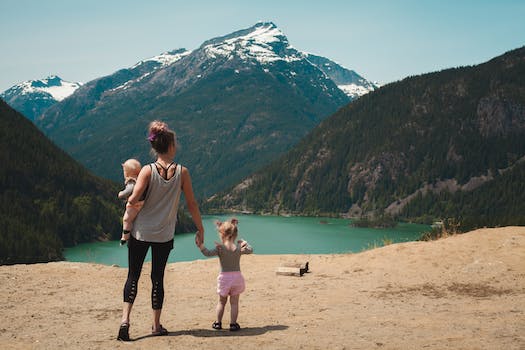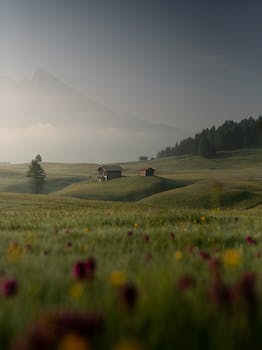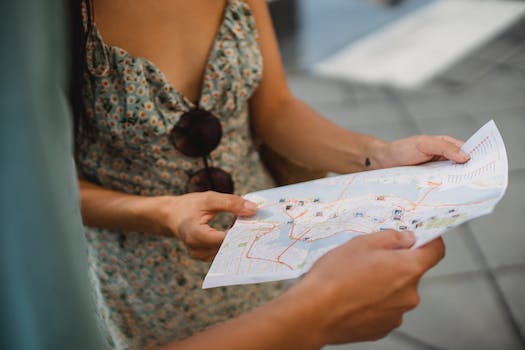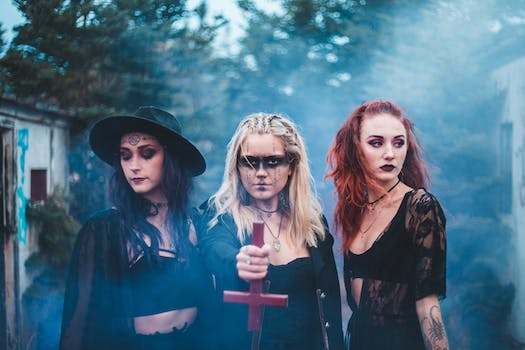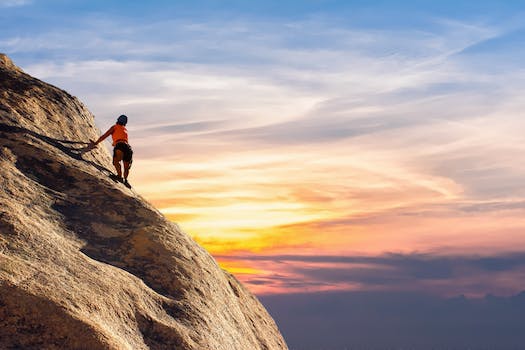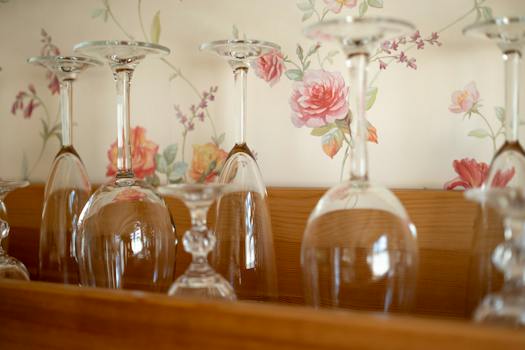

-
Table of Contents
Unveil the ethereal spectacle: Master the art of witnessing the Northern Lights.
Introduction
The Ultimate Strategy for Successfully Witnessing the Northern Lights is a comprehensive guide that aims to help individuals experience the awe-inspiring phenomenon of the Aurora Borealis. This guide provides valuable insights, tips, and strategies to maximize the chances of witnessing this natural wonder in all its glory. Whether you are a seasoned traveler or a first-time adventurer, this guide will equip you with the knowledge and tools necessary to plan a successful Northern Lights expedition. From choosing the right location and time of year to understanding the science behind the lights, this ultimate strategy will ensure an unforgettable experience under the dancing skies.
Best Locations for Viewing the Northern Lights
The Northern Lights, also known as the Aurora Borealis, are a breathtaking natural phenomenon that captivates people from all over the world. This dazzling display of lights in the night sky is caused by the interaction between charged particles from the sun and the Earth's magnetic field. If you're planning a trip to witness this awe-inspiring spectacle, it's essential to choose the best location for viewing the Northern Lights.
One of the most popular destinations for experiencing the Northern Lights is Iceland. With its vast open landscapes and minimal light pollution, Iceland offers a prime viewing spot. The country's proximity to the Arctic Circle also increases the chances of witnessing this celestial wonder. The best time to visit Iceland for the Northern Lights is during the winter months, from September to April, when the nights are longer and darker.
Another excellent location for viewing the Northern Lights is Norway. The country's northern regions, such as Tromsø and the Lofoten Islands, provide ideal conditions for witnessing this natural phenomenon. Norway's fjords and snow-covered mountains create a stunning backdrop for the dancing lights in the sky. To increase your chances of seeing the Northern Lights in Norway, plan your visit between late September and early April.
Sweden is also a fantastic destination for experiencing the Northern Lights. The remote regions of Swedish Lapland, including Abisko National Park and Kiruna, offer pristine wilderness and clear skies, making them perfect for viewing this celestial spectacle. The Sami culture adds an extra layer of authenticity to your Northern Lights experience in Sweden. The best time to visit Sweden for the Northern Lights is from September to March.
If you prefer a more off-the-beaten-path location, consider visiting Finland. The Finnish Lapland, particularly Rovaniemi and Ivalo, is renowned for its Northern Lights displays. The region's vast forests and frozen lakes provide a magical setting for witnessing this natural wonder. Finland's winter months, from September to March, offer the best chances of seeing the Northern Lights.
Canada is another country that offers incredible opportunities for viewing the Northern Lights. The Yukon Territory, located in the country's northwest, is a prime location for witnessing this celestial phenomenon. The region's remote wilderness and minimal light pollution make it an ideal spot for stargazing and Northern Lights hunting. The best time to visit the Yukon for the Northern Lights is from late August to mid-April.
Lastly, Alaska in the United States is a fantastic destination for experiencing the Northern Lights. The state's northern regions, such as Fairbanks and Denali National Park, offer excellent viewing opportunities. Alaska's vast wilderness and cold climate create optimal conditions for witnessing the Aurora Borealis. The best time to visit Alaska for the Northern Lights is from September to April.
In conclusion, choosing the right location is crucial for successfully witnessing the Northern Lights. Whether you decide to visit Iceland, Norway, Sweden, Finland, Canada, or Alaska, each destination offers its unique charm and natural beauty. Remember to plan your trip during the winter months, when the nights are longer and darker, and be prepared to spend several nights in your chosen location to increase your chances of witnessing this awe-inspiring phenomenon. With a bit of luck and the right strategy, you'll have an unforgettable experience watching the Northern Lights dance across the night sky.
Tips for Photographing the Northern Lights
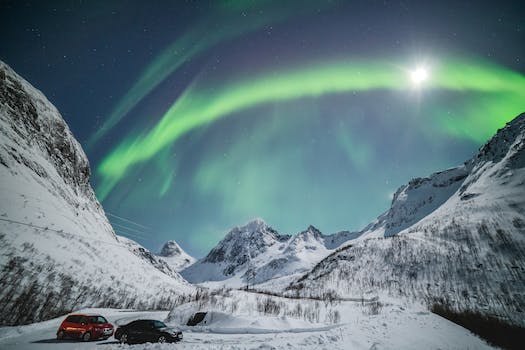
The Northern Lights, also known as the Aurora Borealis, are a breathtaking natural phenomenon that captivates people from all over the world. These mesmerizing displays of colorful lights dancing across the night sky are a sight to behold and a dream for many photographers. If you're planning to witness and capture the beauty of the Northern Lights, here are some tips to help you make the most of your experience.
First and foremost, it's crucial to choose the right location. The Northern Lights are most commonly seen in high-latitude regions near the Earth's magnetic poles. Popular destinations for viewing the Northern Lights include Alaska, Canada, Iceland, Norway, and Sweden. Researching the best time and place to witness this phenomenon will greatly increase your chances of success.
Once you've selected your location, it's important to plan your trip during the optimal time of year. The Northern Lights are typically visible during the winter months when the nights are longer and darker. This means that you'll have more opportunities to witness and photograph this natural wonder. Additionally, it's essential to check the weather forecast before heading out, as clear skies are crucial for a successful viewing experience.
When it comes to photographing the Northern Lights, having the right equipment is key. A camera with manual settings will allow you to have more control over your shots. A wide-angle lens is also recommended, as it will capture more of the night sky and the surrounding landscape. Additionally, a sturdy tripod is essential to keep your camera steady during long exposure shots.
To capture the vibrant colors and intricate details of the Northern Lights, it's important to adjust your camera settings accordingly. Start by setting your ISO to a high value, such as 800 or 1600, to capture more light. Next, set your aperture to a low f-stop number, such as f/2.8 or f/4, to allow more light into the camera. Finally, set your shutter speed to a longer exposure time, typically between 10 and 30 seconds, to capture the movement of the lights.
Patience is key when photographing the Northern Lights. It's important to find a comfortable spot and wait for the lights to appear. Sometimes, the lights may be faint at first, but they can intensify and become more vibrant over time. Be prepared to spend several hours outside, as the lights can be unpredictable and may require some waiting.
In addition to technical considerations, composition plays a crucial role in capturing stunning Northern Lights photographs. Look for interesting foreground elements, such as mountains, trees, or bodies of water, to add depth and interest to your shots. Experiment with different angles and perspectives to create unique and visually appealing compositions.
Lastly, don't forget to enjoy the experience of witnessing the Northern Lights. It's easy to get caught up in capturing the perfect photograph, but remember to take a moment to simply appreciate the beauty and wonder of this natural phenomenon. Take some time to put your camera down and soak in the awe-inspiring display before you.
In conclusion, successfully witnessing and photographing the Northern Lights requires careful planning, the right equipment, and a lot of patience. By choosing the right location, planning your trip during the optimal time of year, and adjusting your camera settings accordingly, you'll greatly increase your chances of capturing stunning photographs of this mesmerizing natural phenomenon. Remember to enjoy the experience and take a moment to appreciate the beauty of the Northern Lights.
Essential Gear for a Northern Lights Adventure
The Northern Lights, also known as the Aurora Borealis, is a breathtaking natural phenomenon that attracts travelers from all over the world. Witnessing this mesmerizing display of lights dancing across the night sky is an experience like no other. However, to fully enjoy and capture the beauty of the Northern Lights, it is essential to have the right gear. In this article, we will discuss the essential gear for a Northern Lights adventure.
First and foremost, a good camera is a must-have for capturing the Northern Lights in all their glory. The lights can be quite faint at times, so having a camera with manual settings and a wide aperture is crucial. This will allow you to adjust the exposure and capture the vibrant colors of the lights. Additionally, a sturdy tripod is essential to keep your camera steady during long exposure shots. This will prevent any blurriness and ensure sharp images.
In addition to a camera, a wide-angle lens is highly recommended for capturing the vastness of the night sky. A lens with a focal length of around 14-24mm will allow you to capture a larger portion of the sky and include interesting foreground elements in your shots. This will add depth and perspective to your photographs, making them more visually appealing.
To keep yourself warm and comfortable during long nights spent outdoors, it is important to dress appropriately. Layering is key when it comes to staying warm in cold temperatures. Start with a moisture-wicking base layer to keep sweat away from your body. Follow this with a warm insulating layer, such as a fleece or down jacket. Finally, top it off with a waterproof and windproof outer layer to protect yourself from the elements. Don't forget to wear warm socks, gloves, and a hat to keep your extremities cozy.
Another essential piece of gear is a headlamp. The Northern Lights are best seen in remote and dark locations, and having a headlamp will allow you to navigate safely in the dark. Look for a headlamp with a red light mode, as this will help preserve your night vision and minimize light pollution.
To fully immerse yourself in the experience, consider bringing a pair of binoculars. Binoculars will allow you to see the intricate details of the Northern Lights up close and enhance your overall viewing experience. Look for binoculars with a wide field of view and good low-light performance.
Lastly, don't forget to pack extra batteries and memory cards for your camera. The Northern Lights can be unpredictable, and you don't want to miss out on capturing that perfect shot because your battery died or your memory card got full. It's always better to be prepared and have extras on hand.
In conclusion, witnessing the Northern Lights is a once-in-a-lifetime experience that requires the right gear to fully enjoy and capture its beauty. A good camera with manual settings, a wide-angle lens, and a sturdy tripod are essential for capturing stunning photographs. Dressing appropriately with layers, wearing a headlamp, and bringing binoculars will enhance your overall experience. Lastly, don't forget to pack extra batteries and memory cards to ensure you don't miss out on any magical moments. With the right gear, you'll be well-prepared to embark on a successful Northern Lights adventure.
Q&A
1. What is the best time of year to witness the Northern Lights?
The best time of year to witness the Northern Lights is during the winter months, typically from September to March.
2. Where is the best location to see the Northern Lights?
The best locations to see the Northern Lights are typically in the high-latitude regions near the Arctic Circle, such as Norway, Iceland, Finland, and Alaska.
3. What are some tips for successfully witnessing the Northern Lights?
Some tips for successfully witnessing the Northern Lights include choosing a clear and dark location away from light pollution, checking the aurora forecast for optimal viewing times, dressing warmly, and being patient as the lights can be unpredictable.
Conclusion
In conclusion, witnessing the Northern Lights requires careful planning and preparation. The ultimate strategy for successfully experiencing this natural phenomenon involves choosing the right location, timing the trip during the optimal season, monitoring weather conditions, and being patient and flexible. By following these guidelines, individuals can increase their chances of witnessing the awe-inspiring beauty of the Northern Lights.


